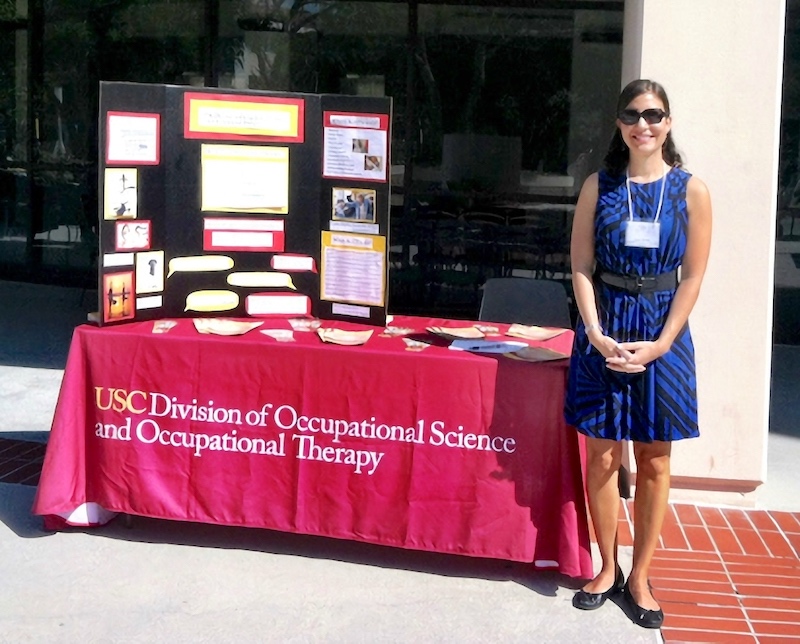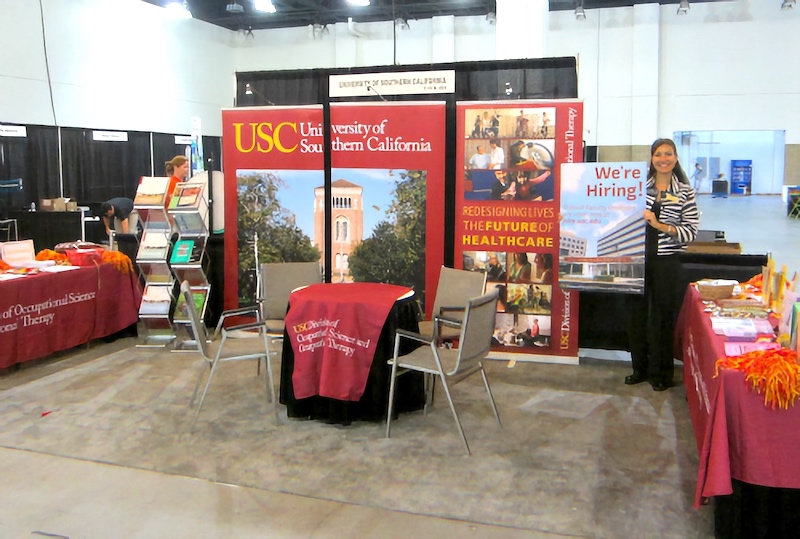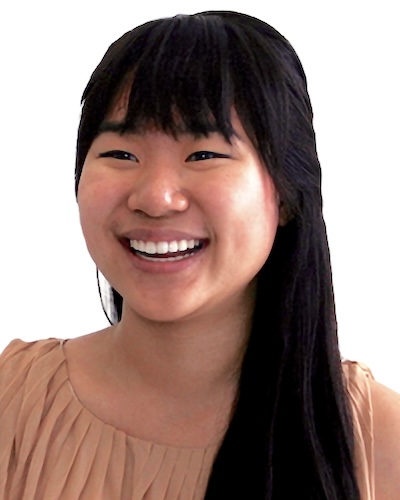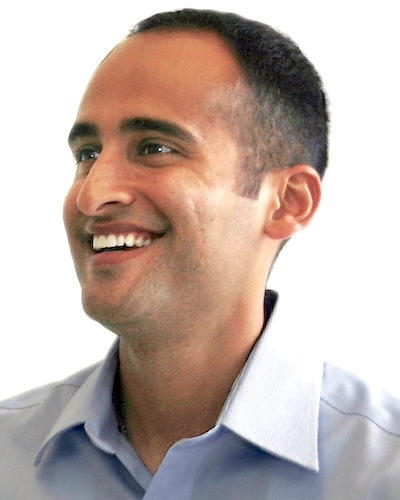Student Blog

Outreach ⟩
October 15, 2012, by Amber
One of the neat things I get to do as a student ambassador is represent USC’s occupational therapy program at outside conferences and events. This weekend, I went to the University of California in Irvine to participate in an event for pre-health undergraduate students. There were over 400 students in attendance and dozens of exhibitors from different organizations representing medicine, nursing, public health, and many other disciplines. It was fun to be an exhibitor and meet students from another university. Many wanted to know exactly what occupational therapists do, and several were already excited to join the profession. Leave me a comment below if you want to see USC OT at your school!

⋯

OTAC Conference ⟩
October 8, 2012, by Amber
This weekend I attended the 36th annual conference of the Occupational Therapy Association of California in Pasadena, CA. The theme of the conference was “In Pursuit of the Vision: Evidence and Action,” referring to issues that will affect the profession in light of health care reform, budget reductions, and other legislative issues. I attended the conference sessions and also had the opportunity to work at the USC Division of Occupational Science and Occupational Therapy booth. The USC booth was buzzing all weekend with alumni and prospective students. It was wonderful to see people reuniting and catching up on each other’s lives. The conference sessions I attended were part of the “student track,” which focused on topics relevant to students such as NBCOT certification. After hours, there were plenty of opportunities for networking and having fun with fellow students and future colleagues. I can’t wait for next year’s conference!

⋯

Tips on studying for the GRE ⟩
October 6, 2012, by Alisa
I just took the test on October 5th and survived it! Boy, that was one long test. Some of you are probably wondering why I’m taking the test when I’m already in the OT program, right? Well, I got admitted as an undergrad at USC, so I started the program as a senior. Therefore, I didn’t have to take GRE, but now, since I’m applying for the Doctorate in Occupational Therapy, I have to submit my GRE scores. Walah! To all the undergrads out there, I would suggest taking it as an undergrad. When you’re in grad school already, you’ll be busier and to motivate myself to study was very tough.
Here are some tips for studying for the GRE:
- Get one of the books (I used Kaplan and ETS) and do a self-study.
- Attend one of the free GRE Strategy Sessions offered by Princeton Review. They raffled off vocabulary books and mathematics books! Wee! Free swag.
- Take a free practice test offered through Princeton Review, Kaplan, etc. and use the results as a guide for studying.
- Focus on studying what you’re good and master it.
- Find a study buddy (shoutout to my tutor, a fellow OT student who patiently taught me basic mathematics during lunch and after class!).
- Familiarize yourself with taking a computerized test. There are a total of 6 sections, one of which doesn’t count toward your score, so you should still try your hardest.
- All the prompts for the essays are posted online. It won’t hurt to take a look at them.
On test day:
- If you arrive early, you can take the test early, and get out earlier.
- Bring a jacket because it might be cold.
- You will be given a locker to put your belongings in. You can only bring your ID and the locker key in the testing room.
- There will be one 10-minute break after the 3rd section. Use it. I went to the restroom and ate carrots.
- There is a 1-minute break after every section. Stretch, stand up, breathe deeply, close your eyes, roll your neck or pray.
- Do not panic! If you’ve studied well, you won’t likely be blanking out. If you do, try your best with an educated guess. Remember, there’s no penalty for guessing. Yay!
- Remember that this is only one test. It does not define who you are. You can take it again. I believe that there are many factors that make up your application. Do not let the GRE scores deter you from applying. Regardless of the results, you are still a great person.
- Your estimated scores for the Verbal and Quantitative sections will pop up at the end of the test. You can google “GRE Concordance Scale” if you’re unsure of how the new score is compared to the old score. For the USC OT Program, it is encouraged that you have at least a combined score of 1000 (old scale).
Good luck! You know more than you think you know. 😉
⋯

“That which you call a rose by any other name would smell as sweet” ⟩
October 5, 2012, by Alisa
The week started out pretty interesting as I made my first club presentation! Troy Camp, the oldest and most diverse student organization, puts on many programs for kids in the neighborhoods, including a week-long camp. Before I made my presentation, every member there had to do a roll call. It was interesting to hear everyone’s nick names such as “Maverick,” “Timber,” “Cracker Jack,” and “Chumbawamba.” I was involved in a few organizations when I was an undergrad, but I was never given a nickname. It’s clever that Troy Camp gives every member a nickname. It offers personalization and a sense of belonging in the organization. A few weeks ago when my friends and I celebrated a friend’s birthday at a Thai restaurant, Hae Ha Heng, we decided to give each other pseudonyms. My friends thought I look like a “Rose,” which I didn’t object to. A lot of my clothes have flowers in them, my flip flops have floral embellishments, and I wear flowers in my hair sometimes. It’s quite fitting, isn’t it? I actually have a nickname that was given to me by my mom. In the Thai culture, everyone that I know of has a nickname that is given by the parents. Nicknames can range from names of foods, colors, body parts, etc. My mom gave me the nickname “Joy,” but since no one really called me that, my younger cousin adopted that name, so my identity was stolen. Not really. Thai people just call me “Sa,” shortened from my full name “Alisa,” which can also be a Thai name! My mom is so witty when she named me. While she was shopping for her wedding dress, she came across this amazing dress that was worn by Alisa, a famous Thai actress-model, who had just worn the dress on the runway, featuring wedding gowns. So, readers, how about your names? Have you ever asked how your name came to be? Let’s hear it.
⋯

What’s OT? ⟩
October 4, 2012, by Ricky
Let’s face it. Occupational Therapy can be challenging to define. OT does so much for so many people, and it’s tough to describe it all in just a few words. Although it retains some key elements, my definition seems to be influenced almost every time I hear a fresh rendition (and that happens quite often). It’s almost like an unfinished work art . . . well not really; maybe I’m just a perfectionist, hehe. Anyhow, since I do hear some really good ones quite often, I have decided that I will be sharing them with ya’ll, going forward. Here’s the standard, to get us started.
In its simplest terms, occupational therapists and occupational therapy assistants help people across the lifespan participate in the things they want and need to do through the therapeutic use of everyday activities (occupations) — aota.org/consumers.aspx
Occupational Therapy is a health care profession aimed at improving performance, preventing illness and disability, and promoting adaptation to life changes — chan.usc.edu/about-us/occupational-therapy
⋯





